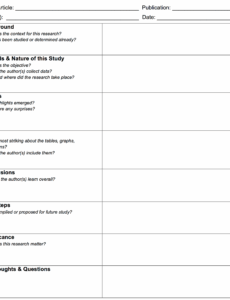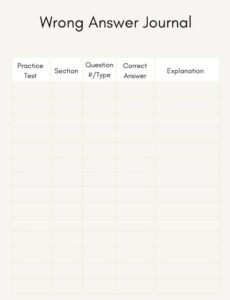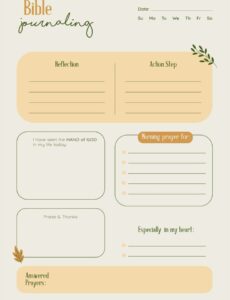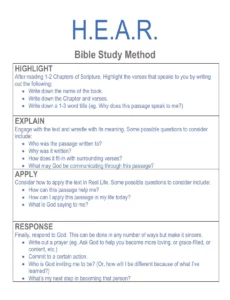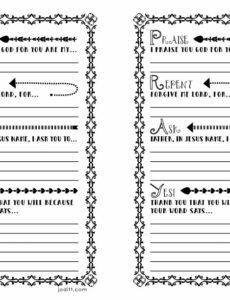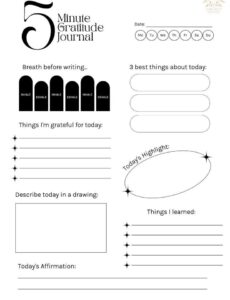Ever found yourself reading a fascinating article, a profound book, or even reflecting on a significant life event, only to realize later that many of your initial thoughts and connections have slipped away? It’s a common experience, but what if there was a way to capture those fleeting insights, engage more deeply with the material, and truly make it your own? That’s where the magic of dialogic journaling comes in, transforming passive reception into active, personal discovery.
A dialogic journal isn’t just a place to jot down notes; it’s a dynamic conversation between you and whatever you’re exploring. It fosters critical thinking, encourages deeper understanding, and helps you forge a personal connection with new information or experiences. But how do you start such a rich dialogue effectively? The answer lies in a structured approach, and that’s precisely what a well-designed dialogic journal template with guide questions offers, providing the framework to unlock profound learning.
What is a Dialogic Journal and Why is it Essential for Deeper Learning?
At its heart, a dialogic journal is an interactive learning tool that invites you to engage in a "dialogue" with a text, an idea, an event, or even your own evolving thoughts. Imagine a page split into two columns: one side for direct excerpts, observations, or descriptions of the experience, and the other side dedicated to your personal responses, questions, insights, and reflections. This isn’t merely summarizing; it’s an active wrestling with the content, making sense of it on a personal level. It moves beyond superficial understanding, pushing you to question, analyze, and connect the dots in meaningful ways.
The essential nature of a dialogic journal stems from its ability to cultivate metacognition – the awareness and understanding of one’s own thought processes. When you consciously record your reactions, pose clarifying questions, challenge assumptions, or draw parallels to your own life, you’re not just absorbing information; you’re processing it, evaluating it, and integrating it into your existing knowledge framework. This active engagement is crucial for long-term retention and the development of higher-order thinking skills, far beyond what simple note-taking can achieve.
This practice is particularly vital in educational settings, but its benefits extend to personal growth, professional development, and even creative endeavors. Whether you’re a student grappling with complex literature, a professional reflecting on project challenges, or simply an individual seeking deeper self-awareness, a dialogic journal provides a dedicated space for this intellectual and emotional excavation. It’s about transforming consumption into contribution, turning external input into internal understanding.
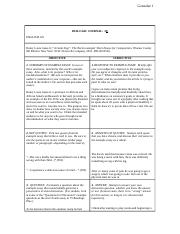
Key Benefits of Embracing Dialogic Journaling
When you consistently engage with a dialogic journal, you’ll start noticing a significant shift in how you learn and process information. The advantages are multi-faceted and impactful:
- Enhanced Critical Thinking: You’re prompted to analyze, evaluate, and interpret rather than just accept information at face value.
- Deeper Understanding and Retention: Actively processing material creates stronger neural pathways, making concepts stick.
- Fostering Personal Connection: Drawing links between the content and your own experiences makes learning more relevant and memorable.
- Improved Writing and Articulation: Expressing your thoughts and questions regularly strengthens your ability to communicate clearly.
- Providing a Record for Reflection: Your journal becomes a rich archive of your intellectual journey, perfect for review and future insight.
Crafting Your Own Dialogic Journal Template With Guide Questions for Maximum Impact
To truly harness the power of this reflective practice, a well-structured dialogic journal template with guide questions is invaluable. While the core idea is a two-column format, you can customize it to suit your specific needs, whether you’re journaling about a book, a lecture, a life event, or a research paper. The "template" provides consistency, and the "guide questions" provide the necessary prompts to dig deeper and ensure you’re not just reiterating, but truly dialoguing.
A basic template often looks like this: one column labeled "Text/Observation" where you place quotes, summaries of events, or descriptions, and another column labeled "My Response/Reflection" for your thoughts. However, you might add a third column for "Key Vocabulary/Concepts" or even a dedicated section at the bottom for "Actionable Insights" or "Lingering Questions." The goal is to create a structure that supports your specific learning objectives and encourages thorough engagement.
The real magic, though, lies in the guide questions. These aren’t just random prompts; they are carefully designed to push you beyond surface-level comprehension. Instead of simply asking "What did I read?", they encourage questions like "What confused me here and why?", "How does this connect to something I already know?", or "What assumptions is the author making, and do I agree with them?". These questions act as mental prods, ensuring you explore different facets of the content.
Here are some types of guide questions you can incorporate into your dialogic journal template with guide questions, designed to spark different kinds of reflection and critical thinking:
- Initial Reaction Questions: "What was my immediate thought or feeling upon encountering this?" "What stood out to me the most?"
- Clarification and Understanding Questions: "What words or concepts are unclear?" "Could I rephrase this in my own words?" "What did the author intend to convey?"
- Analytical and Interpretive Questions: "What is the main argument or idea being presented?" "What evidence supports this?" "How might this be interpreted differently?" "What are the underlying implications?"
- Personal Connection and Application Questions: "How does this relate to my own experiences or beliefs?" "What new questions does this raise for me?" "How can I apply this insight in my life or work?"
- Challenging and Extension Questions: "Do I agree or disagree, and why?" "What counter-arguments could be made?" "Where could I go to learn more about this?"
Embracing the structured yet flexible approach of a dialogic journal, complete with thoughtfully chosen guide questions, can revolutionize your learning process. It shifts you from a passive recipient of information to an active co-creator of understanding, ensuring that every encounter with new knowledge becomes a rich, meaningful, and deeply personal experience.
As you embark on your journey with this powerful tool, remember that consistency is key. Make it a regular part of your learning routine, and don’t be afraid to experiment with different question sets or template layouts until you find what truly resonates with your unique style of inquiry. The insights you’ll gain and the connections you’ll forge will undoubtedly enrich your intellectual landscape and foster a lifelong love for deep, reflective engagement with the world around you.
